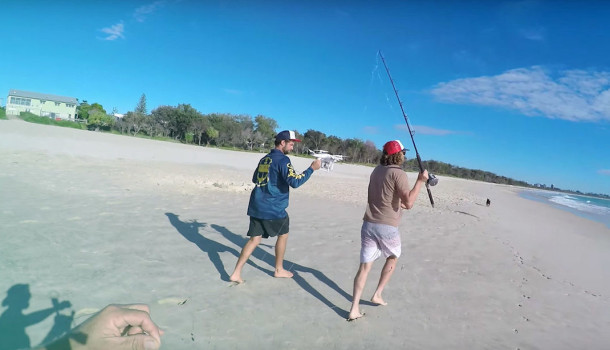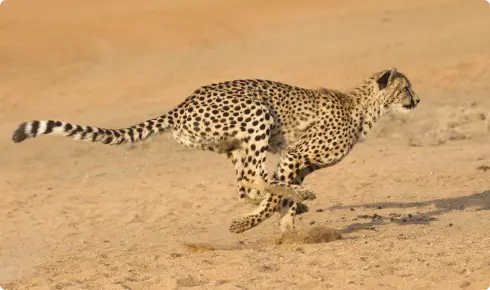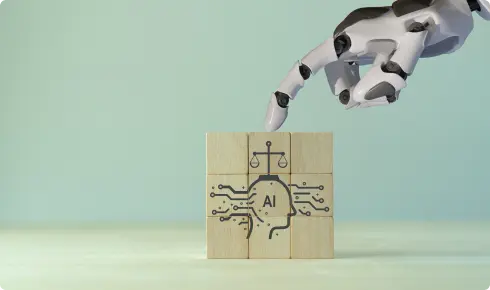Drones and fishing had nothing to do with each other until someone decided they could. Here’s what an agile mind-set’s made of.
BY FAISAL HOQUE
Want to know what disruption looks like? Take a look at this video of a few Australian guys beach-fishing for tuna with the help of a drone.
The squid bait was loosely dangled from the drone, which whizzed out to sea, its camera easily finding the fish in the seawater as its operators watched on an iPad. Before long, they guide the drone to plant its bait in front of the fish, and wham—a successful take. The drone then even filmed the entire catch.
Now, if I were a charter boat captain for sport fishing, I would be seriously worried. My method of doing business may have to change to incorporate a similar experience, or sooner or later I may be out of business.
One of the greatest challenges business leaders and, by extension, their enterprises face in today’s disruptive world is the ability to respond quickly to constant, unforeseen changes like this one. When someone comes out of left field with an idea that turns your market sideways, how are you going to get your whole organization to adapt on a dime?
AGILITY: IT’S ALL IN YOUR HEAD
Agility, by definition, is a business’s response to change—whether those come from new macro- or micro-economic conditions; after all, some disruption snowballs from something that starts small, and other times it arises from massive pressures.
But while business leaders often use the term “agility” to describe their business plans and strategic initiatives, it’s often little more than a buzzword—and a fervent wish. Thriving means being able to identify, understand, and respond toreal-time to change and disruption. And that offers tremendous flexibility. Truly agile organizations can not only sense and respond to competitors’ strategic moves within existing product markets, they can do the same for less obvious pressures—like subtle environmental signals, shifts in customer desires, or small tweaks in technologies that might have big repercussions.

And this hyper-observant, hypersensitive quality all comes from mind-set (another buzzword that’s often thrown around a little too causally). Here are a few concrete ways to embrace a more agile mind-set:
1. Throw out the old goalposts. It is still important to start with an understanding of your place in the market, but try not to get too comfortable with it. Today’s organizations are forced to work in markets that are constantly reinventing themselves. Their market positions are ever-changing—which makes them less reliable indices of a company’s future success. The automotive industry’s headlong rush into electric (and, increasingly, self-driving) cars couldn’t have been foreseen even a decade ago, when the technology still had a long way to go and consumer demand was virtually nonexistent.
2. Being different has always mattered, but now it matters even more. Setting yourself apart from the competition is Entrepreneurship 101, but it’s since evolved into putting yourself in a whole new world from the competition. Why compete on the same playing field when you can invent a whole new one and make up the rules as you go along? The commercialization of space travel seemed like only a billionaire’s dream a few years ago, but Elon Musk has invigorated a whole new realm of mass possibilities.
3. The right choices can become the wrong choices very quickly. Investors in the shale oil industry rode the wave of “energy independence” until confronted with tumbling prices and a self-inflicted supply glut. The publishing industry spent the last decade creating an advertising-led free content model that’s now being sideswiped by simple ad-blocking technologies.
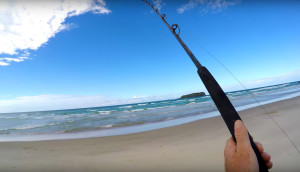
HOW TO PRACTICE AGILITY
Organizations that can successfully navigate these sorts of disruptions need to then put that agile mind-set into practice, and do a few key things—repeatedly and well:
- Continuously scan their environments to identify both threats to existing positions and opportunities to stake out new ones.
- Learn to radically reinvent their competencies—including those that made them the most competitive only yesterday.
- Regularly engage in strategic experiments by testing small-scale initiatives to gain experience—whether it’s with emerging technologies, product or service concepts, or with new customer segments.
- Devise adaptive business architectures that can keep up, making sure their assets (and their partners’ assets) can be realigned quickly—shutting down activities, commencing new ones, or shifting resources from one venture or initiative to the next.
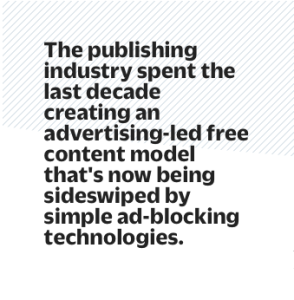
Building an agile organization isn’t easy. Bringing in a persuasive leader or two might help the transformation, but it comes down to the ability of the leadership team to foster collective change-management skills. That includes the ability to assess the company’s activities continuously and cut off any that don’t serve core needs and refining those that do for greater efficiency and productivity.
More crucial to that success, however, is the need to embrace new ways of doing business altogether. This means new organizational structures, the creation and sharing of new types of information, and the establishment of new decision-making processes.
But in case this sounds too abstract or onerous, remember that all these steps start with a mind-set. The Aussies in that drone-fishing video didn’t set out to disrupt the sport fishing industry (and in the end, they very well may not). They simply owned a drone video business and had a creative idea about how to use what they already knew in order to do something dramatically different than what they’d done before.
That’s how disruptions come about—through experimental, “aha” moments that very often lead nowhere, but occasionally reel in something big. Agility, at the organizational level, isn’t about catching the next big fish to swim by. It’s about teaching your entire company to go drone-fishing, and changing the rules for making a catch.
Serial entrepreneur Faisal Hoque is the founder of Shadoka, which enables entrepreneurship, growth, and social impact. He is the author of Everything Connects: How to Transform and Lead in the Age of Creativity, Innovation, and Sustainability (McGraw-Hill) and other books. Use the Everything Connects leadership app for free.
Copyright (c) 2016 by Faisal Hoque. All rights reserved.
Original article @FastCompany.
